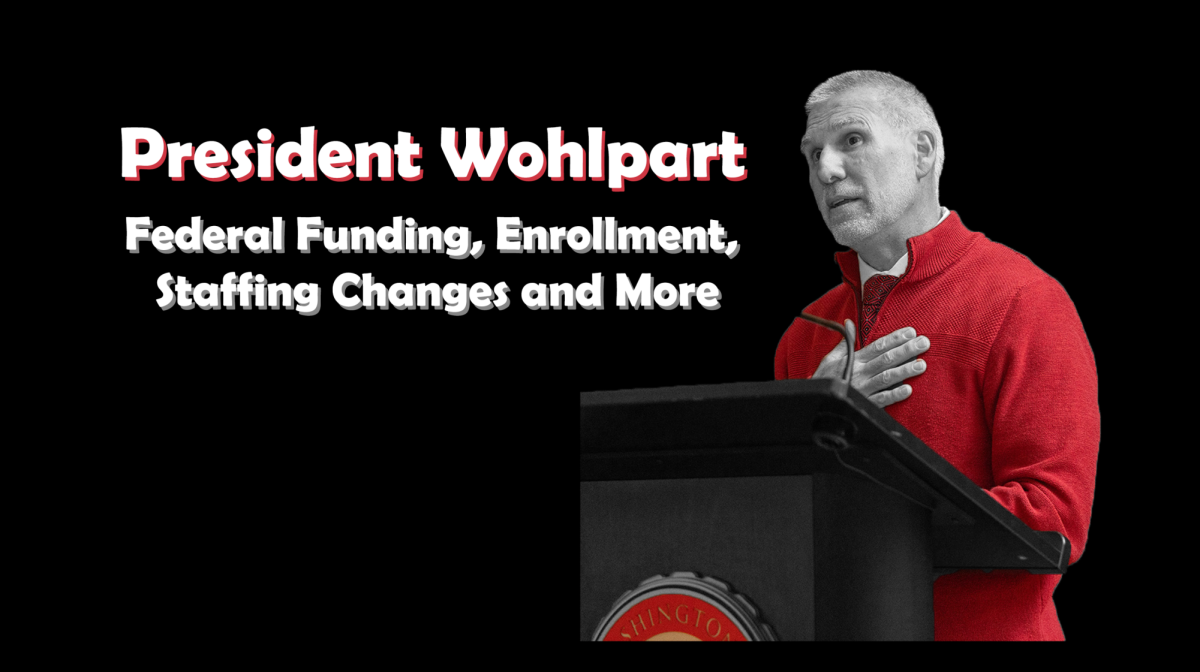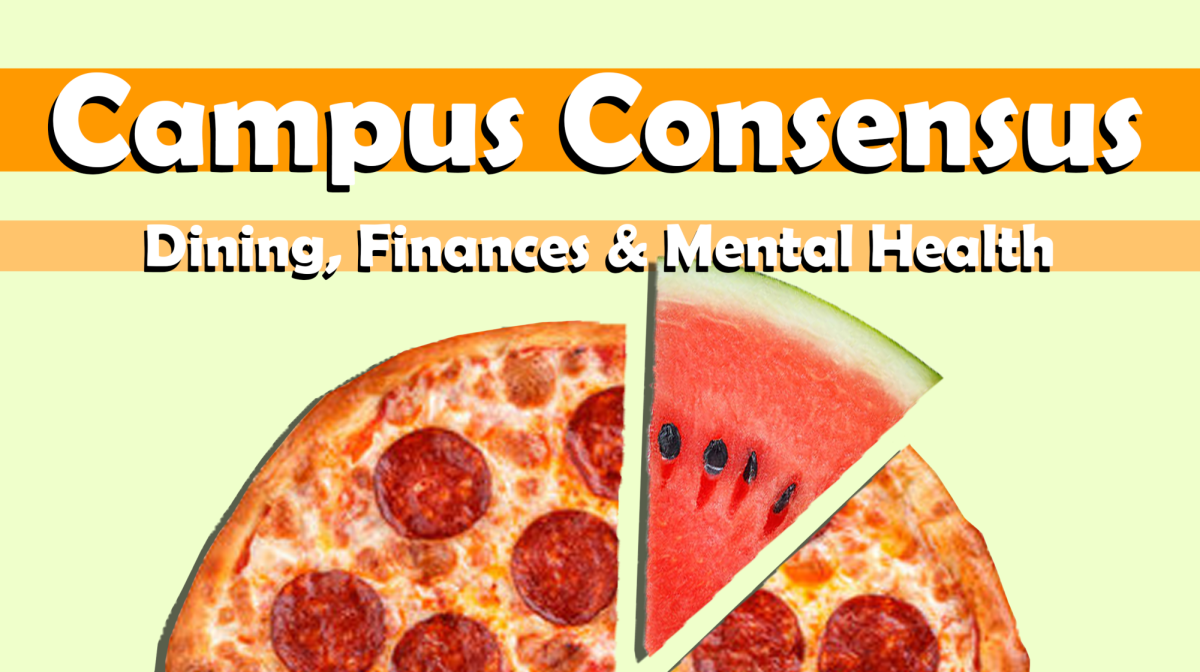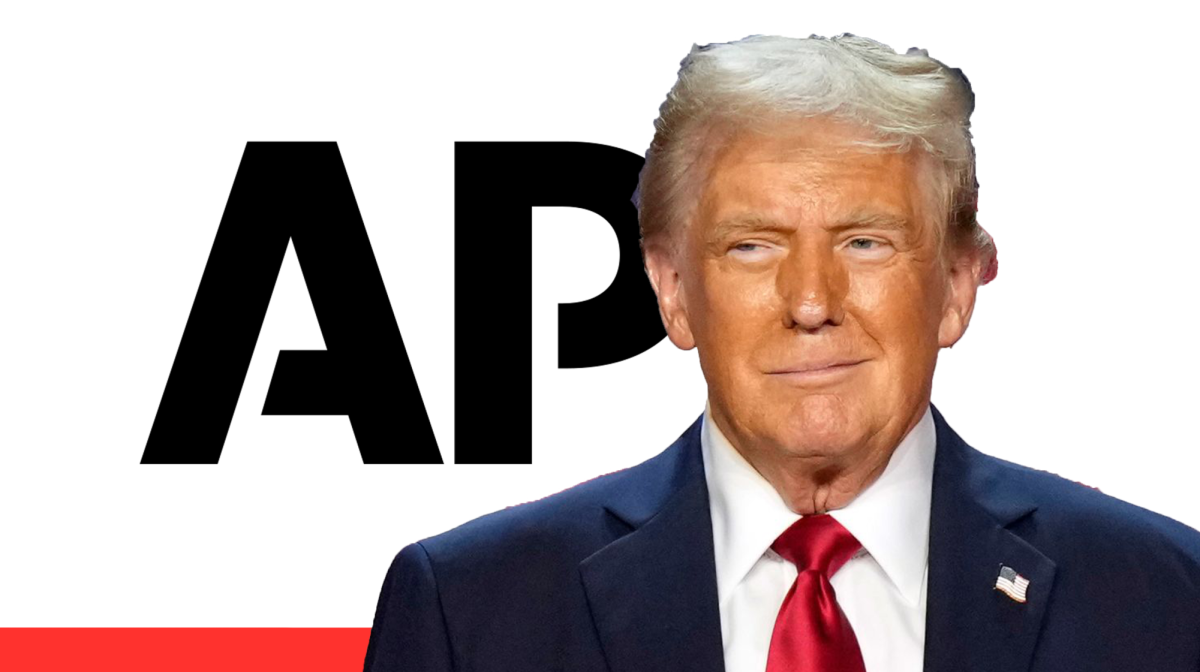CWU’s University Administrative Leadership Team (UALT) and shared governance leaders recently held a meeting to plan for the 2025-2027 biennium budget. The meeting, which happened just over two weeks ago, had two main goals as stated in an email from President Jim Wohlpart.
The first goal was, “To celebrate the very good and hard work all of you have done in managing a structural deficit caused mostly by lower enrollment and by how the state has funded wage increases. That deficit is about $15 million over several years,” Wohlpart said in his email. “The primary process we have used to adjust to this deficit has been to reduce our number of employees, which has strained our ability to get our work done. These staffing reductions have also had an effect on morale, but overall, we have done a good job of managing this challenge by working together.”
The second goal was, “To address this question: Can we continue down this same path if we receive insufficient funding for wage increases and if the governor’s budget — which includes a 3% reduction — prevails? Or should we shift to an alternative path, and what would that path look like?”
The Observer reached out to Joel Klucking, CWU’s Senior VP for Finance & Administration, with questions surrounding the meeting. The following is a Q&A, conducted via email, as requested by Klucking.
Q&A edited for length and clarity.
Q: The email stated that this is the second meeting of its kind. How are meetings like this handled, and how did this second one come together almost 3 years later?
A: These meetings are intended to hear from our students and employees across the university through their shared governance leadership at important moments in the university’s history. We invited leadership from faculty senate (we have 55 senators who they represent), leadership from our unions, exempt staff and classified staff (who have councils that they lead of several individuals each) and leadership from our students. Their collective voices represent the leadership of our employees and students that includes well over 100 people, and we needed to hear the voices of those individuals on an important question about budgets. To create a culture of collaboration and inclusion, this is similar to the process we took for other major university initiatives related to campus safety, the strategic plan, and our marketing and branding efforts, among others.
Q: The email discusses a 15 million dollar deficit caused primarily by lower enrollment and state-funded wage increases. While the outlook of the message is positive, was there anything discussed at the meeting that you can share regarding how the university is handling staffing reductions moving forward?
A: Question three effectively answers this, ‘can we continue down the same path or should we shift to an alternative path?’ The president made it clear that he understands the challenges that have been created with the path we have been going down—of reducing our employee base. Folks are working harder, doing more, and we haven’t been able to replace individuals who leave at a fast enough pace because of the budget deficit. There is a morale issue that we must address collectively—the administration and our shared governance leadership groups. The point of the meeting was for the administration to hear from the leadership of our employees and students about how things are going if we wanted to continue down the path we have gone down, or if we wanted and needed to pivot. There was a consensus in the room to pivot.
Q: The second goal of the meeting posed the question “Can we continue down this same path if we receive insufficient funding for wage increases and if the governor’s budget — which includes a 3% reduction — prevails?” Was the meeting able to find an answer to this question?
A: There was consensus in the room that we must pivot to an alternative path. The critical component to this decision—and why it was important for the voice of the leadership of our shared governance groups who work directly with well over 100 leaders in their areas—is that it will take all of us working together to make this pivot. We will need to rethink everything—all of our structures and systems, all of the ways we do things. Which makes this an adaptive challenge – one where our previous ways of thinking, our perceptions, our habits are no longer valid and must be questioned and rethought.
We need to think about both short and long-term opportunities. We must do this work through our vision, mission, values and strategic plan. And we must continue to elevate shared governance in the process.
What we did in the Feb. 5 meeting was a bit new for our campus, only having done it one time before—so we are using muscles that we haven’t used as a university community. When we use new muscles, it sometimes feels uncomfortable and we aren’t really sure what to think about how it feels. But it is essential to do this work in this way and to confer with the leadership of these groups because this will also be hard and complex work—and it will take all of us working together towards a common goal. This is why the meeting was called – to bring in the shared governance leaders who represent leadership groups that they work with to hear their thoughts. The administration didn’t want to make this decision without their input.
Q: The email uses phrases like, “alternative path”, throughout. The prevailing idea being that if state funding is to be cut then CWU would have to rethink almost everything institutionally. At the meeting were these potential changes discussed, if so what were some of the options that were determined?
A: At this point there are only examples of concepts to get people to start thinking about changes. Now that we have come together as a community through this shared governance process to decide to go down this path, we will be creating opportunities for more concrete ideas to come forward from the university community. We now need to hear feedback from the university community on how we currently spend our funds and how we might spend our funds differently so that we can slow the attrition of employees.
Q: Before plans are finalized, will there be a space for staff and students to directly voice their opinions on the change? To what level will the campus community be involved in this process?
A: As with our other university-wide initiatives related to campus safety, strategic planning and marketing and branding, there will be opportunities for campus community involvement. For example, on Tuesday, President Wohlpart shared the same presentation with the President’s Budget Advisory Committee, which has representation from staff, faculty and ASCWU. This group should report back to their constituencies, and we will reconvene on April 22nd to hear thoughts. We are in the process now of thinking through the best way to get the feedback, input and involvement of the university community. That will likely happen in March and early April.
Q: Is there anything budget-wise you would like to share that has developed since our last conversation, or anything you feel would be pertinent to share with the campus community?
A: Every public 4-year university in Washington is facing some type of budget issue, even those that have not had enrollment declines. Central has been working at this methodically for a few years and has made tremendous progress, and as a result, we can navigate the issues stemming from state and federal funding changes. This effort to take a different path should lead to positive changes that increase our flexibility in the future and allow us to continue to invest in student success. The most important idea behind this conversation is that we are weathering a challenging time, but we have been doing so in a manageable way. But we cannot continue down this path and need to take a different path in order to provide the support for our faculty and staff that they deserve.








